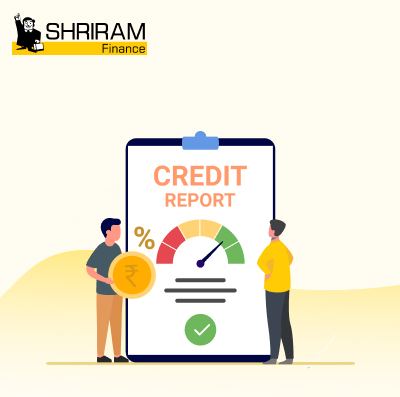An overdraft facility is a financial tool offered by banks and financial institutions that gives account holders the flexibility to withdraw more money from their savings or current accounts than the actual account balance. It functions as a flexible credit line, where the account can remain overdrawn up to a sanctioned limit, and repayments are automatically made when new funds are deposited.
This facility helps account holders address urgent financial needs even if their account balance is insufficient. In this article, we will explore this financial service in detail, understand its benefits, and learn how you can apply for it online.
Types of Overdraft Facilities
There are two main types of overdraft facilities:
1. Pre-arranged Overdraft Facility
This is an overdraft limit that is preset based on your relationship with the bank as well as your creditworthiness. Financial institutions generally allow overdraft limits between ₹10,000 and ₹2,00,000 for such facilities (the limit may vary). This facility allows account holders to overdraw money up to the permitted limit whenever required. For example, if you have an authorised overdraft limit of ₹20,000, you can withdraw up to ₹20,000 more than your account balance.
2. Instant Overdraft Facility
Some financial institutions also offer on-demand small overdraft limits for short periods without any prior arrangement. These are generally offered instantly when you initiate an online transfer with an insufficient account balance. After approving the instant overdraft, financial institutions will deduct the amount owed when a sufficient balance is available.
How Does an Overdraft Facility Work?
An overdraft facility works similarly to a short-term loan but with a lot more flexibility. Here's how it works:
- Overdraw Your Account: Once you have an overdraft facility in place, you can withdraw money from your account even when you have insufficient funds, up to the limit set by your financial institution.
- Interest Charges: The most important factor to note is that you will be charged interest on the overdrawn amount. The interest rate can vary depending on the financial institution and the type of overdraft you have. Usually, the rate is lower than personal loan rates but higher than that of credit cards.
- Repayment: Unlike loans, overdrafts don’t have a fixed repayment schedule. Once you deposit funds into your account, the overdrawn amount is automatically cleared. If the overdrawn amount is not repaid within the period specified by the institution, penalties may apply, and the overdraft limit could be revised.
- Fees and Penalties: Financial institutions usually charge fees if you exceed your overdraft limit or don’t repay it on time. These fees may be daily, monthly, or based on a percentage of the overdraft amount. Therefore, it is important to manage your overdraft carefully.
Benefits of Availing an Overdraft Facility
An overdraft facility offers several advantages that can make it a valuable tool in your financial toolkit:
- Meet Urgent Cash Needs: The key benefit of an instant overdraft online facility is that it allows people to meet urgent monetary requirements even if sufficient liquid cash is not available in the account. Whether it is paying utility bills, medical expenses or other financial emergencies,an overdraft facility assists in managing short-term cash flow shortages.
- Avoid Late Payment Fees: By paying bills and EMIs on time with the help of overdraft facilities, people can avoid late payment fees or penalties. This also helps maintain a good credit score.
- No Collateral Required: Overdraft facilities do not require any assets to be pledged as collateral, which makes availing them hassle-free compared to other forms of borrowing. The banks provide this facility based on the financial discipline and past dealings of the account holder.
What are the Eligibility Criteria for Overdraft Facilities?
Banks and non-banking financial companies (NBFCs) consider the following aspects before approving overdraft facilities:
- Credit score: Good credit history showcases financial discipline, hence improves chances of approval
- Income stability: Steady income for the last 6 to 12 months through salary slips reflects repayment capability
- Existing relationship with the financial institution: Long-term associations, average balances maintained, etc., are evaluated
- Occupation: Type of job, industry reputation, designations, etc., are appraised
- Account Balance Maintenance: Maintaining a minimum average balance and avoiding frequent overdrafts is often considered during eligibility assessment.
How to Apply for an Overdraft Facility?
Most leading private and PSU financial companies offer both pre-arranged as well as instant overdraft facilities through online and offline channels. Here’s a simple step-by-step guide to applying for an overdraft online:
- Check Eligibility: Most financial institutions have specific criteria for overdraft eligibility. These include a minimum monthly income, a good credit score, and a stable banking history. Make sure you meet these criteria before applying.
- Visit the Financial Institution’s Website: Go to the financial institution's website you are interested in and look for the overdraft facility option. Many financial institutions allow you to apply for an overdraft facility online through their customer portal.
- Fill Out the Application Form: The online application form will ask for details such as your name, address, income, account number, and the amount of overdraft you wish to apply for. Some institutions may also ask for proof of income or employment.
- Submit Required Documents: Depending on the institution’s policy, you may need to submit documents such as salary slips, bank statements, or identity proof. These documents are necessary for the bank to assess your eligibility for the overdraft.
- Approval Process: Once you submit the application, the financial institution will assess your eligibility and approve or reject your application. If approved, your overdraft limit will be set, and you will be notified of the details.
- Instant Overdraft Facility: Many financial institutions now offer instant overdraft facilities online. With these services, you can apply for an overdraft and get approval within minutes. Some may also offer instant overdraft loans for immediate cash needs.
- Activate Your Overdraft: After approval, you may need to activate your overdraft facility by agreeing to the terms and conditions set by the financial institution. Once activated, you can start using the overdraft as required.
The Bottom Line
An overdraft facility can provide a quick solution for managing your finances during a temporary financial difficulty. With the ability to access funds instantly, repay flexibly, and avoid the need for collateral, it’s a useful option for both individuals and businesses. Institutions like Shriram Finance offer such facilities with transparent terms and customer-centric support, making it easier to navigate short-term cash flow challenges. However, it’s important to use it wisely, understand the terms, and ensure timely repayment to avoid accumulating debt.































